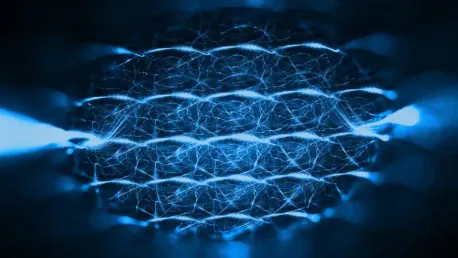Heimdall Power, a trailblazer in global grid-enhancing technology, has unveiled a comprehensive plan designed to help U.S. utilities comply with and exceed the Federal Energy Regulatory Commission (FERC) 881 mandate within a two-week timeframe. This groundbreaking blueprint aims to streamline the installation of Heimdall Power’s Neuron sensors on high-voltage power lines across the nation, enabling utilities to achieve Dynamic Line Ratings (DLR) well ahead of the July 2025 deadline. By laying the groundwork for real-time rating requirements, Heimdall Power’s initiative not only ensures timely FERC compliance but also gears utilities up for future enhancements to meet escalating energy demands.
1. Real-Time Data Collection
One of the core innovations of Heimdall Power’s two-week compliance blueprint involves the deployment of their Neuron sensors, designed to compile live data from high-voltage power lines. These sphere-shaped Neuron sensors, often referred to as Magic Balls, are equipped to gather and assess critical hyper-local factors that impact transmission capacity, such as current, voltage, line angle, temperature, and weather conditions. By collecting real-time data, these sensors provide an invaluable resource for understanding the dynamic state of the grid at any given moment.
The ability to compile hyper-local data offers utilities a more granular understanding of their power lines’ status, enabling more precise management of electricity transmission. For instance, if a particular section of the grid experiences unusual stress due to fluctuating weather conditions, the data collected by Neuron sensors can alert operators, who can then make informed decisions to mitigate potential issues. This level of real-time detail is essential for an energy infrastructure that must adapt to increasingly dynamic and sometimes unpredictable demands.
2. Data Analysis through Software
The data collected by Heimdall Power’s Neuron sensors is not just amassed for the sake of monitoring; it is actively processed and analyzed through sophisticated software. Heimdall Power’s software leverages machine learning algorithms to sift through the extensive data and derive insights into the real-time transmission capacity of power lines. These algorithms can understand complex patterns and correlations within the data that may elude human analysis, providing a more accurate picture of the grid’s operational state.
By employing advanced data analytics, Heimdall Power’s system can predict potential issues before they escalate into significant problems, allowing for preemptive action. For example, if the software detects a trend that suggests a risk of overloading in a particular segment of the grid, it can recommend operational adjustments to balance the load and prevent failures. This proactive approach not only enhances grid reliability but also optimizes the use of existing infrastructure, thereby reducing the need for costly physical expansions.
3. Quick Sensor Installations via Drone
Another revolutionary aspect of Heimdall Power’s blueprint is the rapid deployment of Neuron sensors using drone technology. Instead of traditional methods that require teams of six linemen, Heimdall Power employs two-person drone crews who oversee the autonomous attachment of Neuron sensors to power lines. Each sensor installation takes less than a minute, drastically reducing both the time and labor required for deployment.
This innovative approach allows for up to 15-second sensor placements, thereby significantly accelerating the installation process. The use of drones for sensor deployment not only reduces human risk in high-voltage environments but also increases the feasibility of widespread sensor adoption. This method minimizes operational disruptions, allowing utilities to continue their normal function while new sensors are swiftly and safely installed.
4. Weekly Sensor Deployment
To ensure rapid compliance, Heimdall Power has optimized its operations to achieve an impressive rate of sensor deployment. With twenty drone teams working concurrently, the company can install up to 800 Neuron sensors every seven days. This means that any utility requiring 1,600 sensors or fewer can meet and surpass FERC 881 optimization requirements within just two weeks.
Such an accelerated deployment schedule ensures that utilities not only comply with current mandates but do so in a manner that greatly enhances their operational capabilities. By quickly equipping their grids with advanced Neuron sensors, utilities can immediately reap the benefits of enhanced data collection and analysis while laying a robust foundation for future upgrades. This rapid deployment capability is crucial for utilities aiming to stay ahead in a fast-evolving regulatory and operational landscape.
5. Transitioning to Dynamic Line Ratings
Heimdall Power, a leader in global grid-enhancing technology, has rolled out a comprehensive plan to assist U.S. utilities in complying with and surpassing the Federal Energy Regulatory Commission (FERC) 881 mandate in just two weeks. This innovative strategy focuses on the seamless installation of Heimdall Power’s Neuron sensors on high-voltage power lines nationwide. These advanced sensors enable utilities to implement Dynamic Line Ratings (DLR) well ahead of the July 2025 deadline. Heimdall Power’s initiative lays the foundation for real-time rating requirements, ensuring timely FERC compliance and equipping utilities for future upgrades to meet increasing energy demands. The extensive preparation encapsulated in this plan aims not only to fulfill immediate regulatory needs but also to anticipate and cater to the growing energy needs of the nation. By introducing cutting-edge technology and precise scheduling, Heimdall Power is positioning itself as a key player in advancing grid reliability and performance in the United States.









